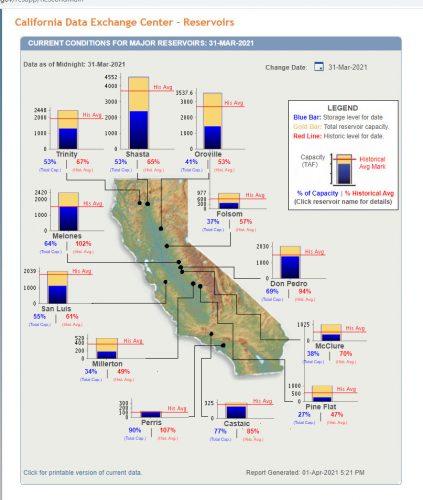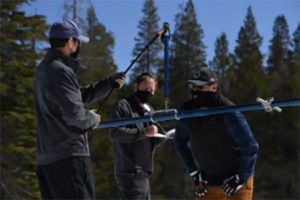April Snowpack Revealed Third-driest Year On Record
Sonora, CA – As the wet season ends, California’s snowpack is well below average and state water officials say the “next few weeks are critical.”
The water content of the Sierra Nevada snowpack measured 59% of the April 1 average, which is typically its peak, according to Department of Water Resources (DWR) officials, who performed a manual reading at the Phillip Station in Lake Tahoe Thursday. It measured a snow depth of 49.5 inches and a snow water content of 21 inches, translating to 83% of average for the location.
The state overall has only about 50% of average precipitation in the current water year and its major reservoirs are only about half full, disclosed Sean de Guzman of the Department of Water Resources.
“It’s currently tied for the third-driest year on record,” relayed de Guzman.
This brings the second consecutive dry winter and indicates that the state is entering another drought only several years after a five-year dry spell, according to DWR. The big question now is how much of the current snowpack will end up in reservoirs that are currently half full.
“As the snowpack starts to melt the big unknowns are how dry are the soils beneath the snowpack and how much water will absorb into those soils before running off into our rivers and streams,” de Guzman said. “The next few weeks are just really critical to watch to see how much of that snowmelt will enter into our reservoirs.”
This year is somewhat of an anomaly, indicates de Guzman, as there was more snow than rain received, a result of colder storms. The latest runoff forecast is around 58% of average, slightly under last year’s number, according to de Guzman.
The season’s final snow survey reading is April 29. Even with the Department of Water Resources characterizing the current year as “critically” dry, California is in a better position than during the last drought.
“Even though we have drought-like conditions, Californians as a whole have actually been conserving a lot more water compared to where we were before 2012 when the previous drought started,” noted de Guzman.” A lot of the public has continued their effort which is a great sign, and we need to keep continuing to do that.”
Below are the current state reservoir conditions:


